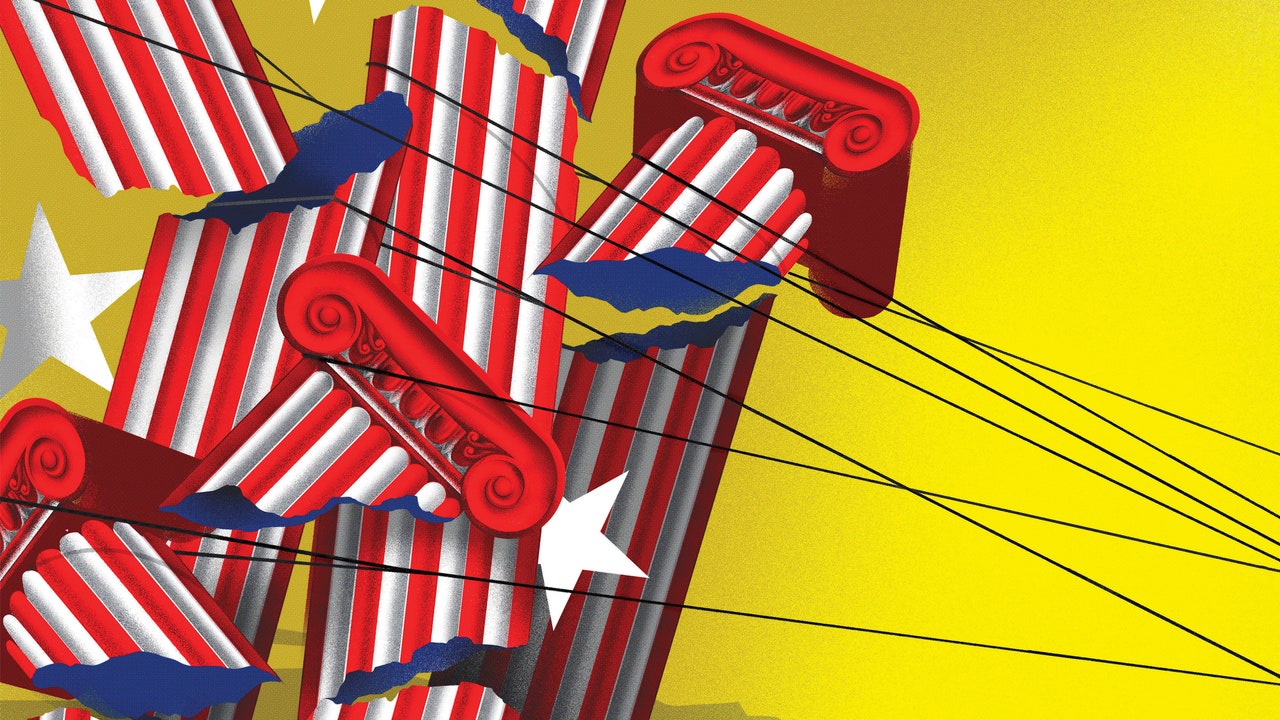What Peter Thiel, JD Vance, and Others Are Learning From Curtis Yarvin and the New Right

Like Levy, Milius is in the funny position of being at the intersection of many of these crosscurrents, having worked in mainstream politics but appearing on so-called dissident podcasts and being on the periphery of a cultural scene where right-wing politics have taken on a sheen approximating cool.
She said she was too “black-pilled”—a very online term used to describe people who think that our world is so messed up that nothing can save it now—to think much about what it would look like for her side to win. “I could fucking trip over the curb,” Milius said, “and that’s going to be considered white supremacism. Like, there’s nothing you can do. What the fuck isn’t white supremacism?”
“They’re going to come for everything,” she said. “And I think it’s sinister—not that I think that people who want to pay attention to race issues are sinister. But I think that the globalization movement is using these divisive arguments in order to make people think that it’s a good thing.”
This is the Cathedral at work.
A few weeks after NatCon, I drove from California to Tucson to meet Masters, a very tall, very thin, very fit 35-year-old. I wanted to see how all this might translate into an actual election campaign, and I’d been watching a lot of Fox News, including Yarvin’s streaming interview with Carlson in which he gave a swirling depiction of how the Cathedral produced its groupthink. “Why do Yale and Harvard always agree on everything?” he asked. “These organizations are essentially branches of the same thing,” he told a mesmerized Carlson. “You’re like, ‘Where are the wires?’ ” He sketched his vision of (as he calls it) a “constitutional” regime change that would take power back from this oligarchy—so diffuse most people hardly knew it was there. “That’s what makes it so hard to kill,” he said.
At a coffee shop near the house he’d bought when he moved back home to Tucson from the Bay Area, Masters and I went through the tenets of his nationalist platform: on-shoring industrial production, slashing legal immigration, regulating big tech companies, and eventually restructuring the economy so that one salary would be enough to raise a family on. I mentioned Yarvin and his line of arguing that America’s system had become so sclerotic that it was hopeless to imagine making big systemic changes like these. “In a system where state capacity is very low…” I started the question.
“Alas,” he said, with a twinkle in his eye.
“Do we need a crisis to get there?” I asked him.
“Maybe, maybe, maybe,” he said. It wasn’t where his immediate thinking was. “I’ll have the proverbial machete,” he said. “But yeah, it may take some kind of crisis to get us there.”
He paused. “But we’re already sort of in one, right?”
Masters often says he’s not as black-pilled and pessimistic as some in the New Right spheres. He seems, unlike many New Righters, to still earnestly believe in the power of electoral politics. But he does think that the culturally liberal and free-market ideology that has guided America’s politics in recent years is a hopeless dead end. “A country is not just an economy,” Masters told the dissident-right outlet IM—1776 recently. “You also need a conception of yourself as a nation, as a people, and as a culture. And that’s what America is increasingly lacking today.”
“It’s true that I’m incredibly hopeful,” he said to me. “I think it’s really bleak, I think the default is continued stagnation, and maybe you get the crisis in 5 years or maybe it’s 30 years from now.”
He told me that he didn’t like to use terms like the Cathedral and used “the regime” less often than Vance, although I later noticed that he used this latter phrase frequently with interviewers on the dissident right.
“ ‘The regime’ sounds really sexy, right?” he said to me. “It’s a tangible enemy—if you could just grapple with it in the right way, you can topple it. And I think it’s actually just a lot less sexy and a lot more bureaucratic,” he said. “But I’ve read that stuff, and I see what it means.”
I asked him about the term Thielbucks, and how true it was that the Thiel Foundation was funding a network of New Right podcasters and cool-kid cultural figures as a sort of cultural vanguard.
“It depends if it’s just dissident-right think-tank stuff,” he told me, “or if anyone actually does anything.”
“I don’t know how that became a meme,” he said about Thielbucks. “I think I would know if those kids were getting money.”
“We fund some stuff,” he told me. “But we’re not funding an army of meme posters.” He told me that he and Thiel had met with Khachiyan, one of the cohosts of Red Scare. “Which was cool,” he said. “Their podcast is interesting.”
I asked if there was a world in which they might get funding from Thiel. “Maybe, yeah,” he said. “We fund some weird stuff with the Thiel Foundation.”
We drove together to a campaign event, talking about everything from how technology is reshaping our brains to environmental policy, both of us circling from different political directions to an apocalyptic place. “I do think we’re at a moment of crossroads,” he said. “And if we play it wrong, it’s the Dark Ages.” Masters has publicly said he thinks “everybody should read” the Unabomber’s anti-tech manifesto, “Industrial Society and Its Future,” which may sound strange for a young tech executive running to serve in the United States Senate. But to Masters, Kaczynski’s critique was a useful analysis of how technology shapes our world and how “degrading and debasing” it could be to human lives.


